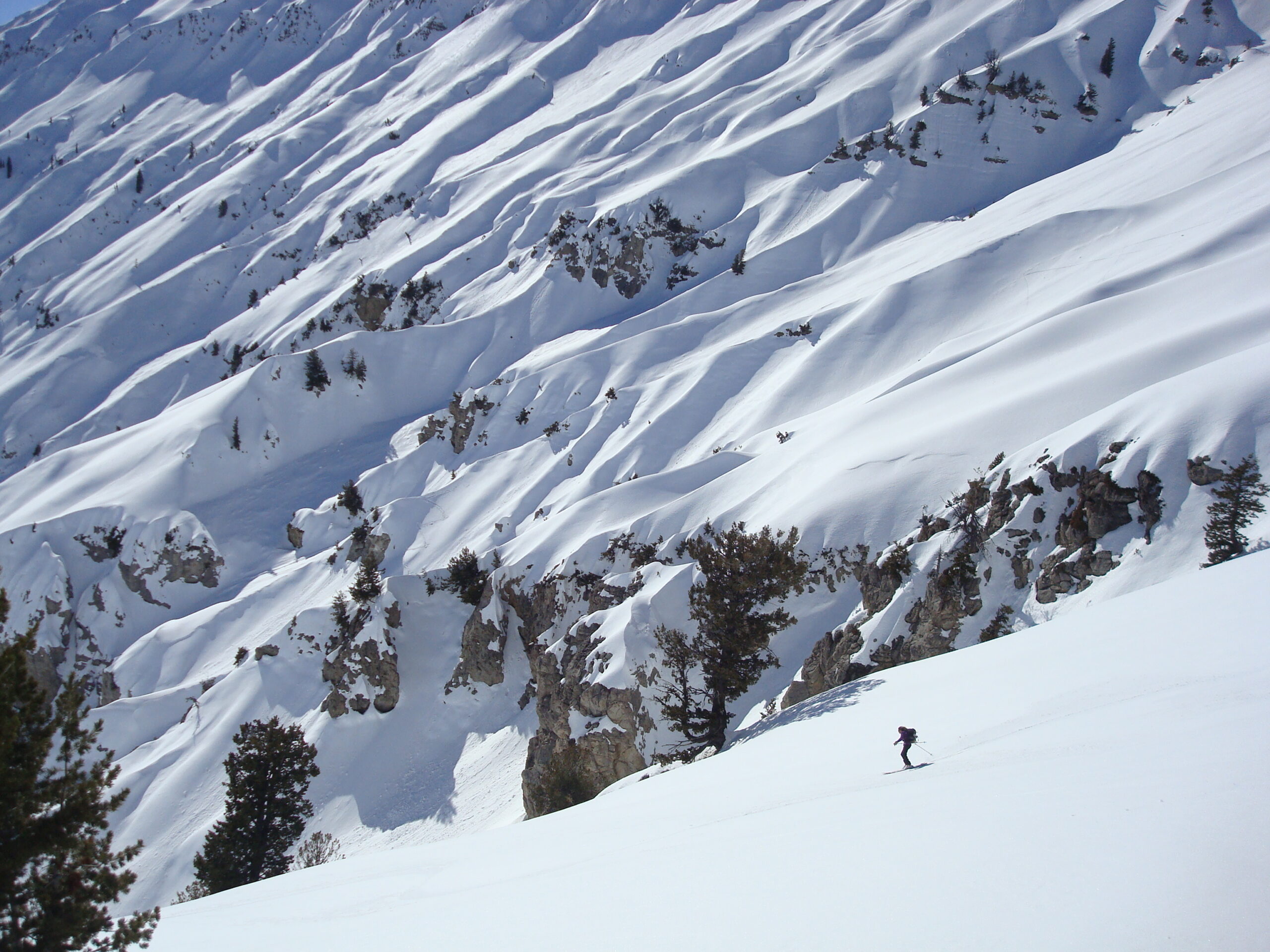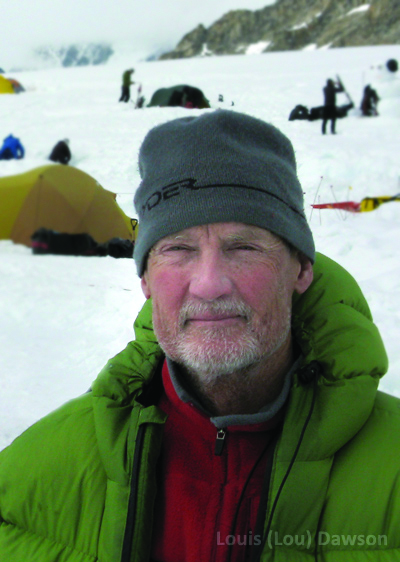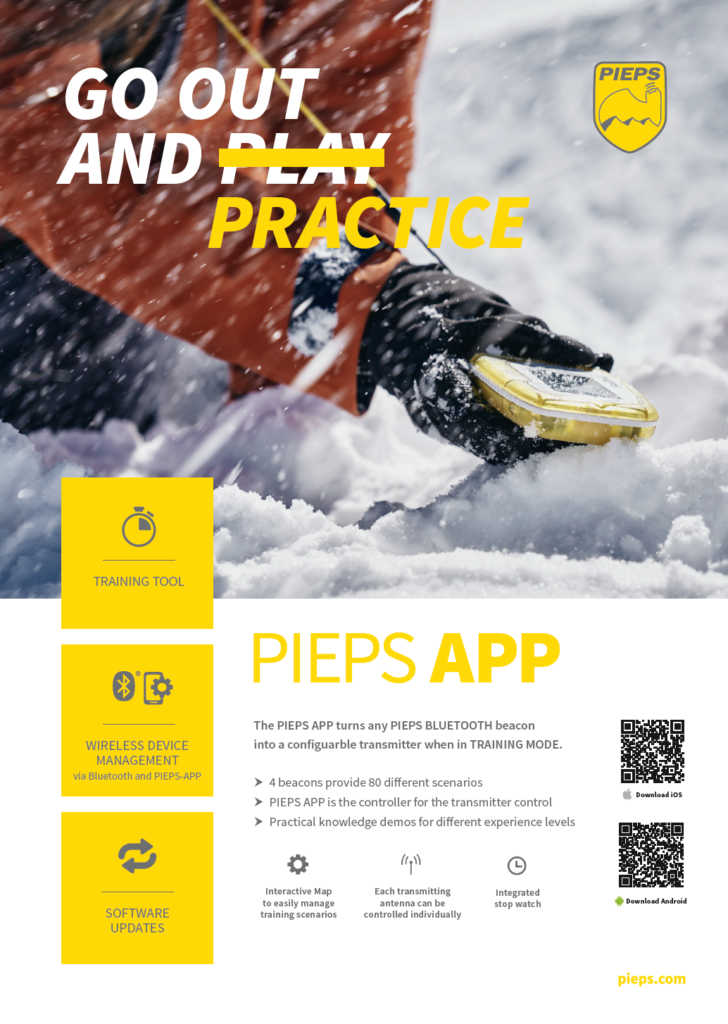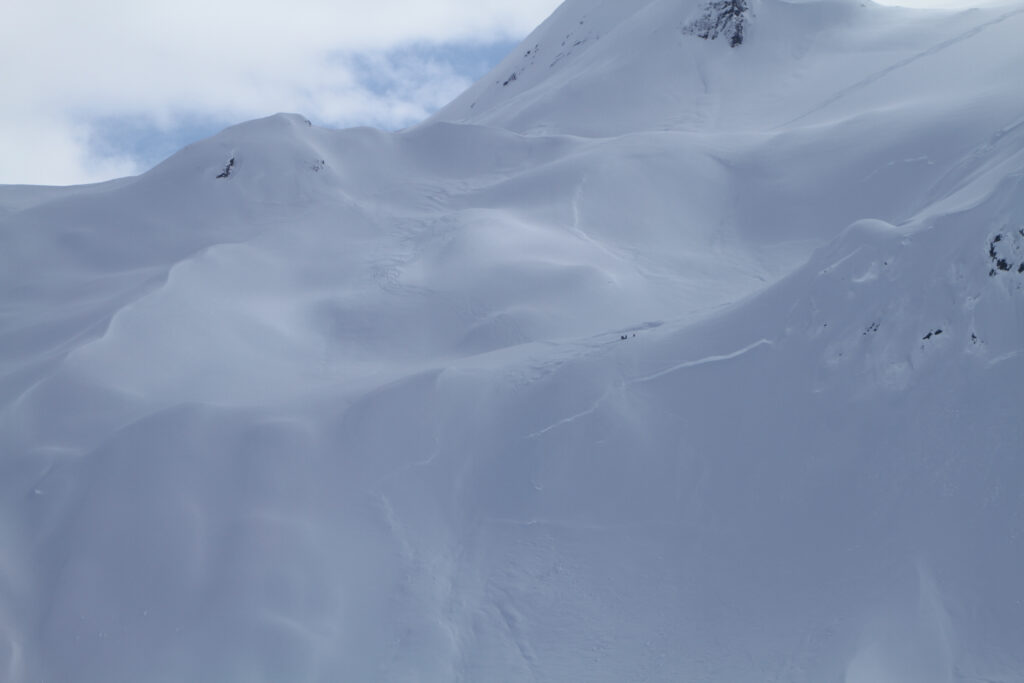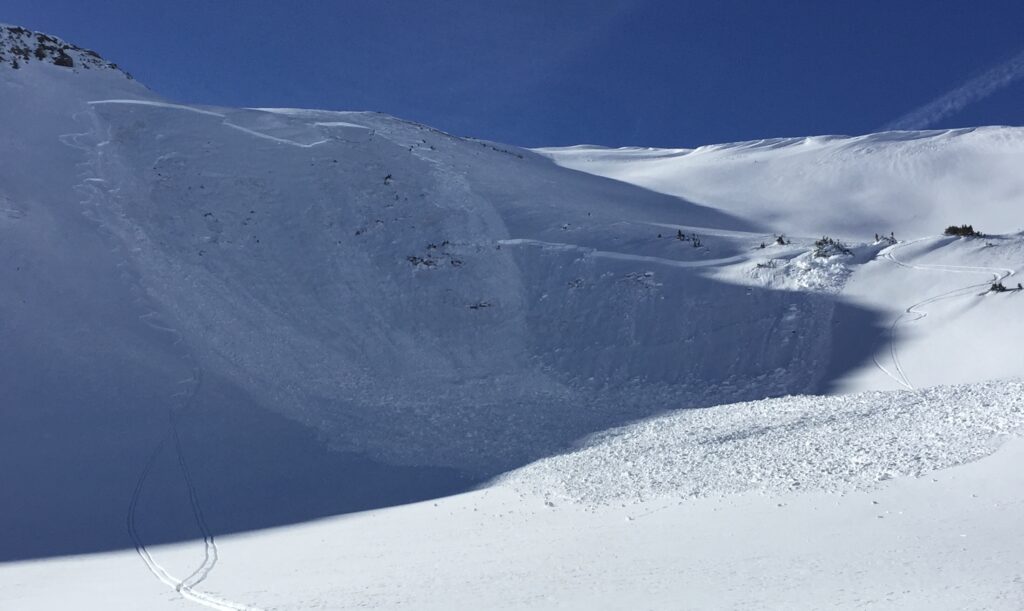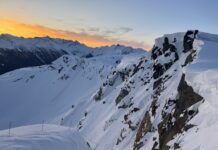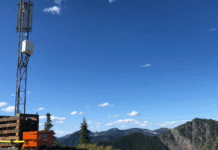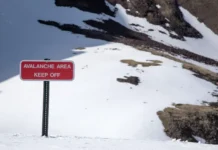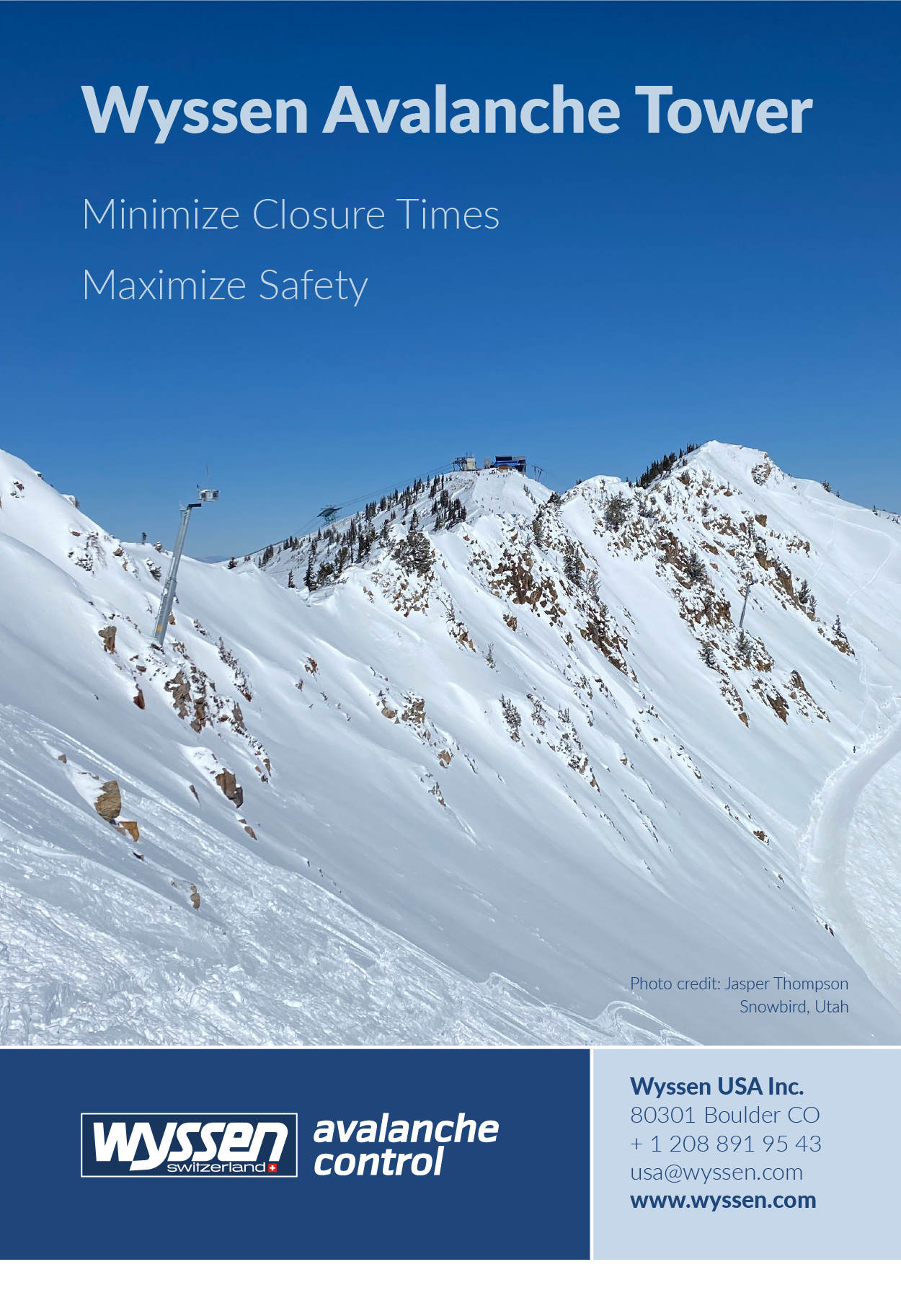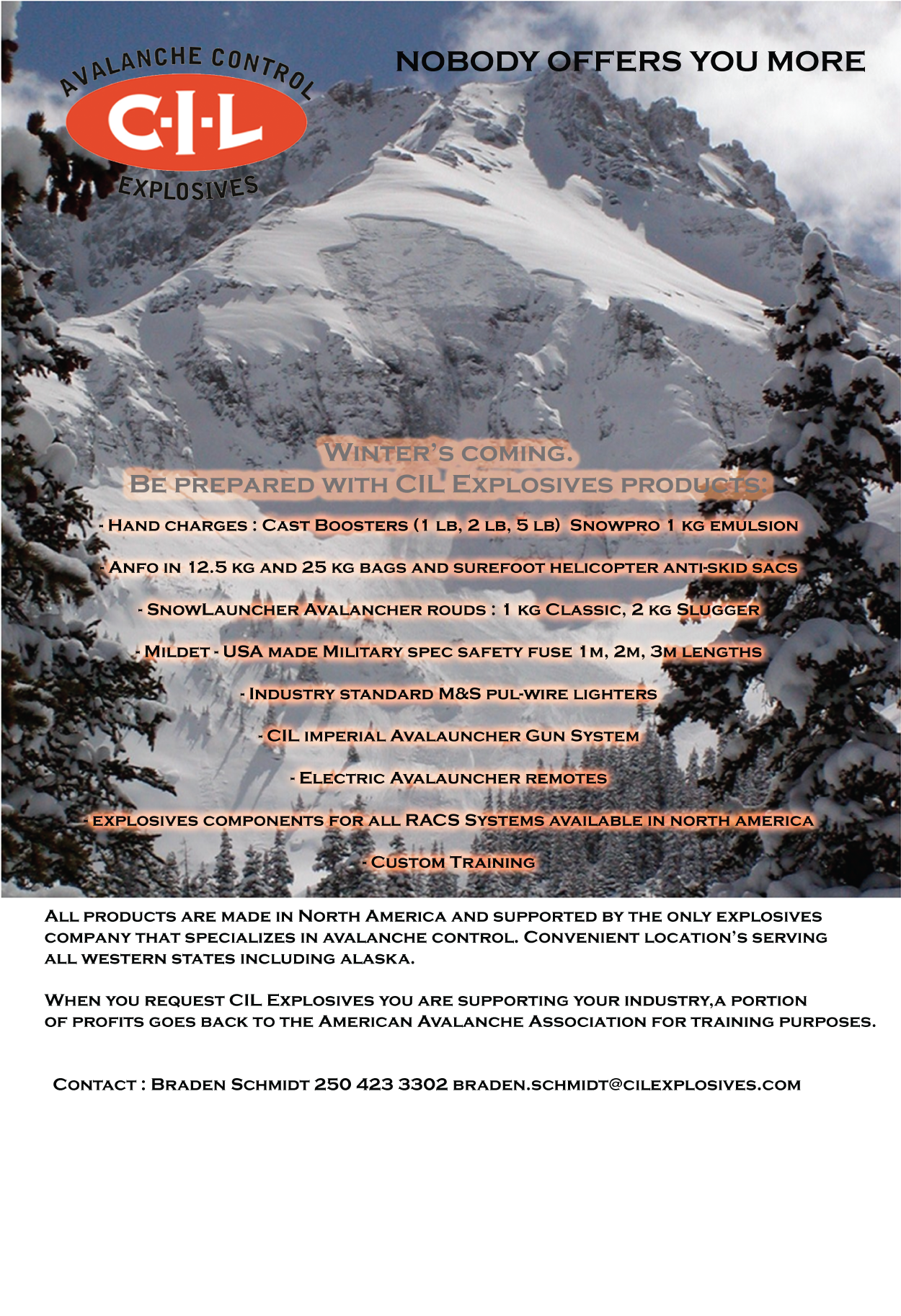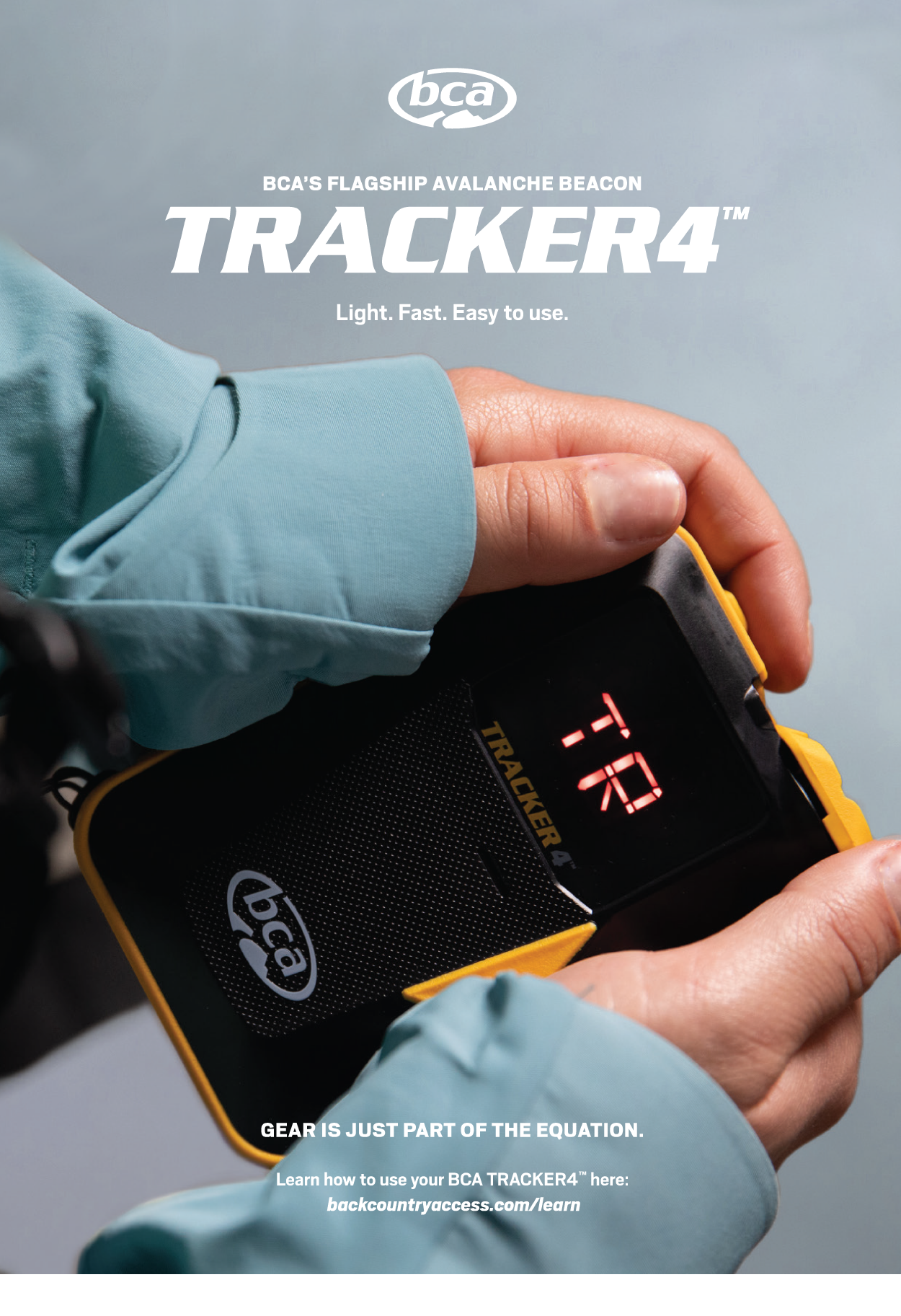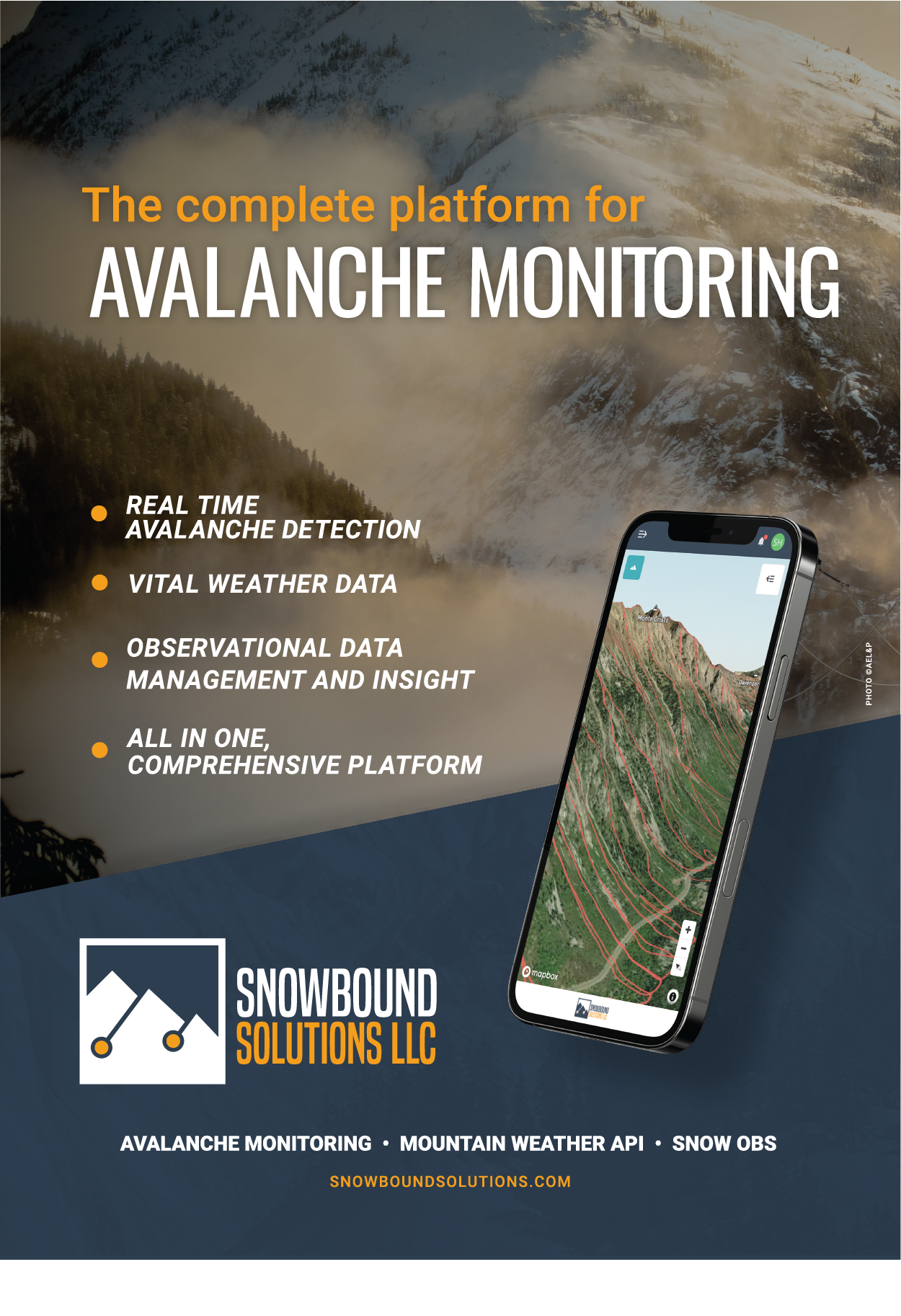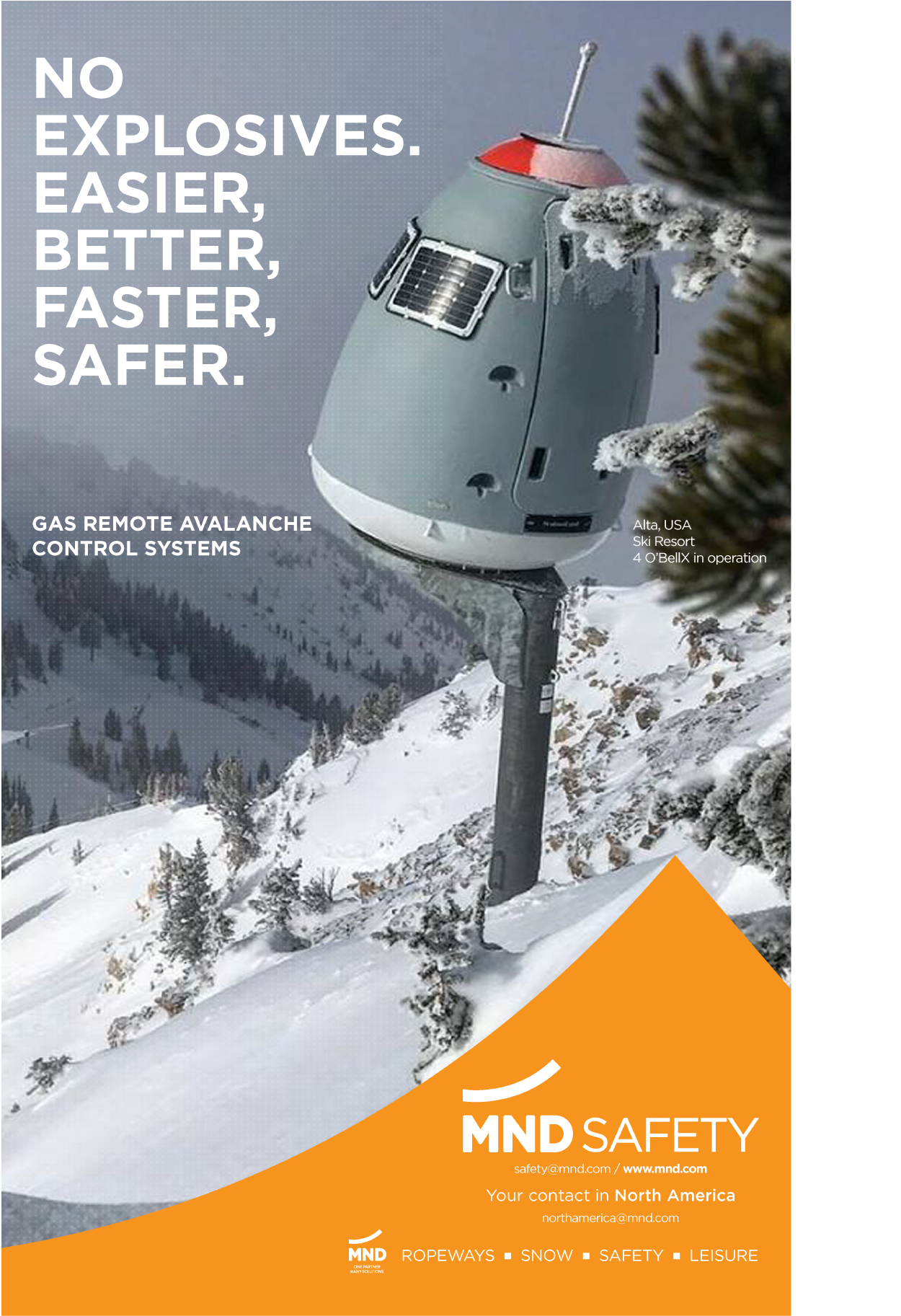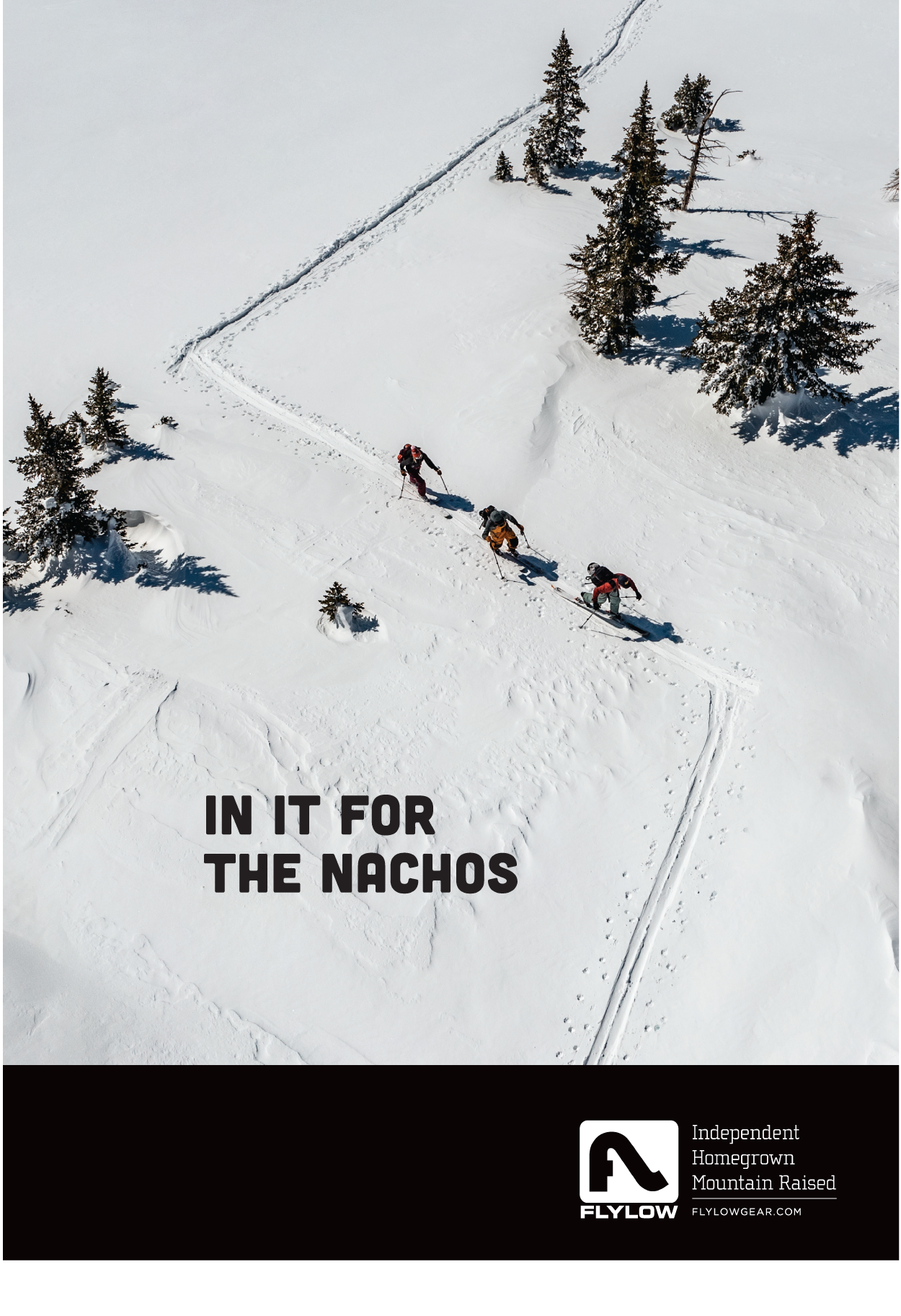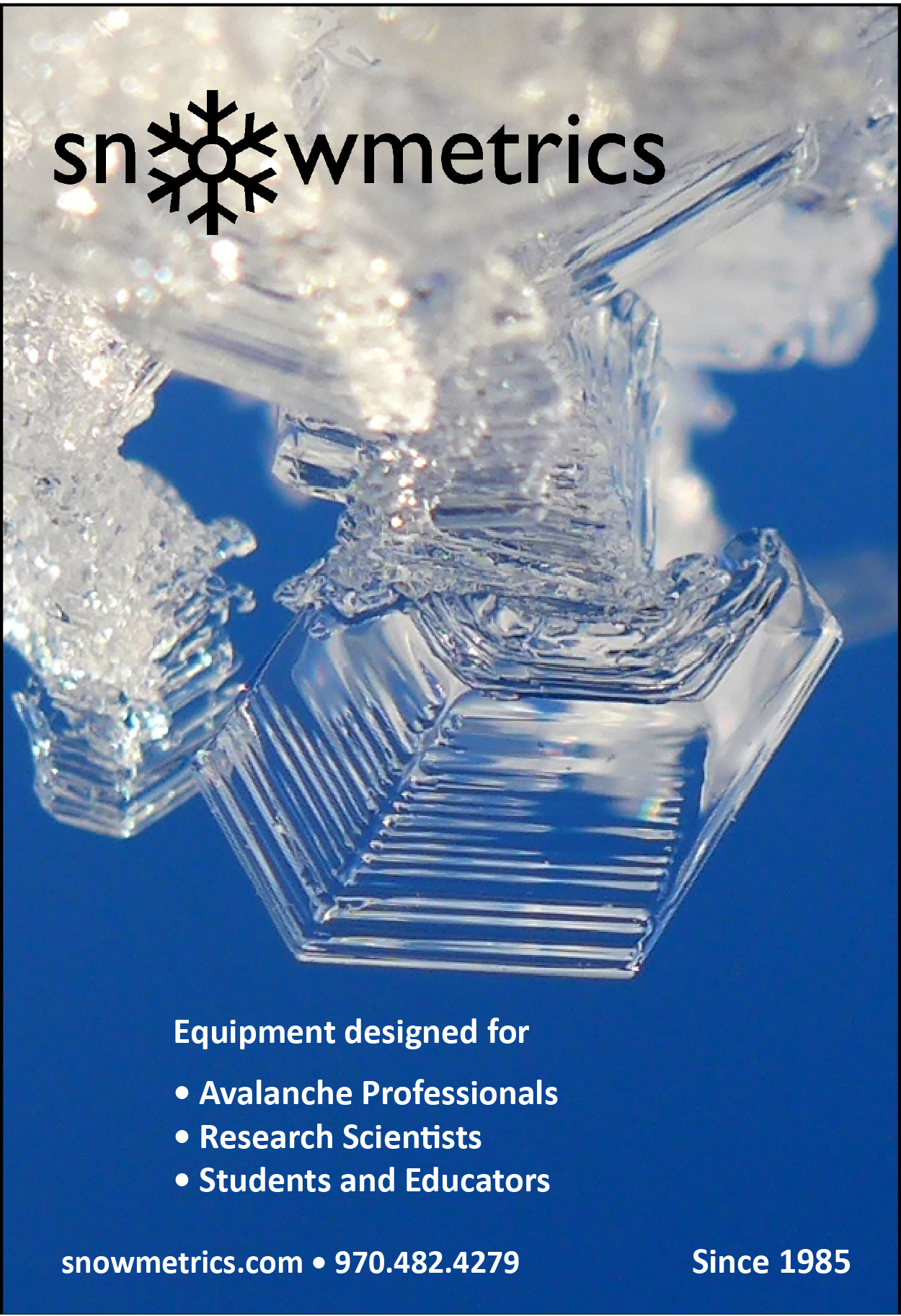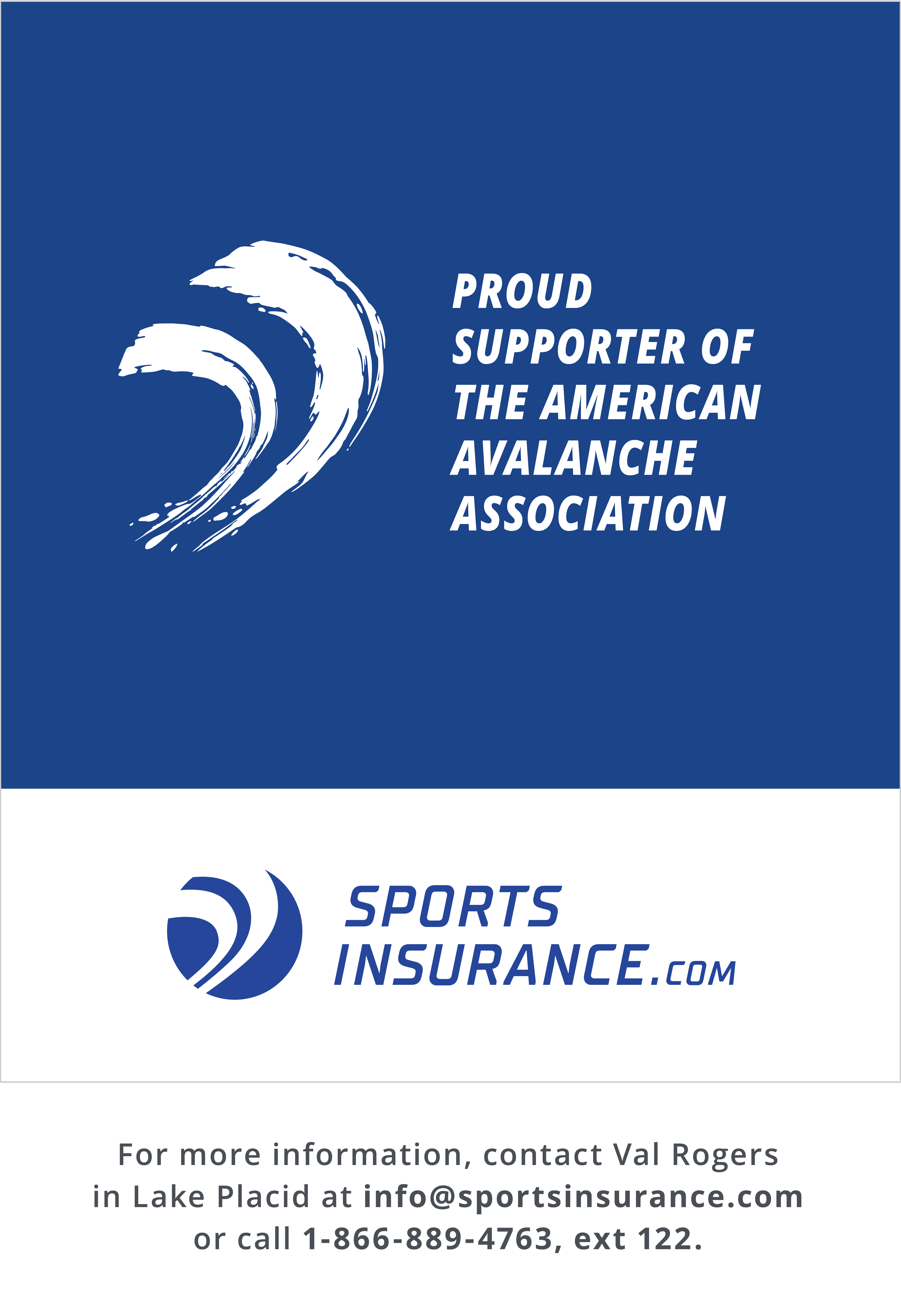Originally published by WildSnow
By Lou Dawson
Consider dating. Should you explore a relationship with one person, or play the field? How about your handheld. Do you layer multiple apps until the battery spurts flame and you get the latest version of electronic death? Or do you keep it simple, only a few things running at once? In either case, personal or digital, too many things at once might lead to easily avoided pain, or at least, suffering.
When it comes to “multiples,” perhaps avalanche safety is an easier issue to parse than romance and phones. In my view, the gold standard in avy safety is exposing one person at a time to hazard, “OAT” for short. Funny how often the treasure is ignored. For reasons both bad and good.
On the one hand, “ski one at a time” makes perfect sense. On the other hand, any rule involving human nature interacting with natural forces can be sophomoric or perhaps even dated. For example, in the ancient past of extreme skiing we had a “rule” that said “climb it first.” That adage could still save some lives. But steep powder skiing is now common, and climbing straight into the throat of a snow-loaded beast can be unwise, if not foolhardy. Likewise, many modern extreme ski routes are not practicable as climbs, even with firm snow conditions.
So, back to “ski one at a time.” What does OAT really mean (besides the breakfast you hastily slurp as you race out the door to go skiing)? What are the pros, cons, and considerations related to skiing OAT?
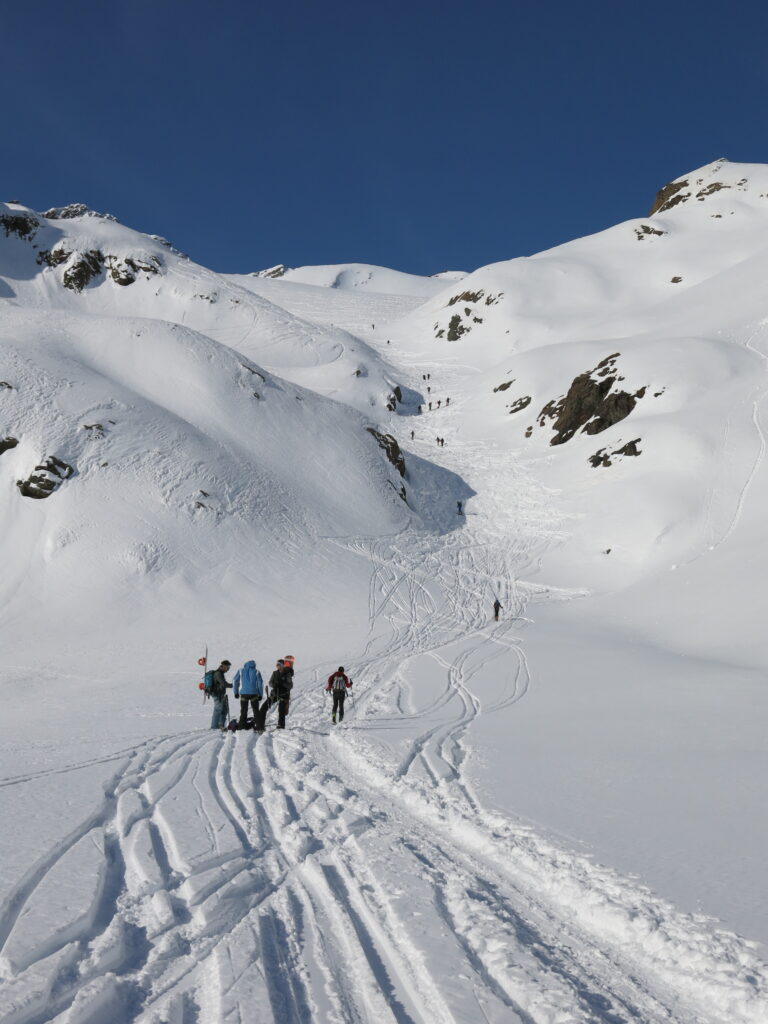
Exploring the Virtues of Skiing One At a Time
- It falls upon my keyboard to begin with a definition. In avalanche terrain, when a group agrees to ski a run “one at a time,” the exact meaning is that only one person in the group, at any given moment, is exposed to avalanche danger (on the uphill or down.)
- Item 1 above does not mean standing in the middle of a slide path, snapping photos of your buddy’s face shots, thinking “if it slides, I’ll just ski to the side…” Instead, OAT means each person runs out the entire pitch, one-hundred percent, from one entirely safe zone to another.
- Aha, “safe zones,” or “islands of safety.” What are they? Year after year, the reports roll in. Too often, skiers hang at what they perceive as an island of safety—and a big avalanche overruns their archipelago like a Class 5 hurricane. These tragic events show that identifying truly safe zones is as important as identifying avalanche slopes, and yes, it’s the same thing.
The most common unsafe safe zone is the small island of trees you’re “pretty sure is safe, because otherwise they wouldn’t be there!?” Second to that, the side of the avalanche path—where did that myth come from? Also watch for the common noob mistake of simply not stopping far enough beyond the runout zone. See our alpha angle post for more about determining how far a slide can slide. - “But I watched a guide ski down with three clients at once!” Why? Most often money is the reason. While a group of three total is perhaps the ideal, the economic reality of guiding is that more than two clients per trip might be necessary. Separating a larger group and skiing OAT causes major time issues. Say you have a guided group of six, and skiing something OAT requires eight minutes each (hey, the clients are not auditioning for Matchstick). Just that one section adds an hour to the day! Guide tries to do OAT, clients enjoy happy hour in snow cave.
- Cons to OAT? The biggie: Consider a nautical analogy. Man overboard. Your throw rope isn’t long enough, no rescue swimmers are in the water, and you’re too tired to dive. Shift the thought experiment to ski touring. You’re on a 2,000 vertical foot run that you ski top-to-bottom OAT, the last person down is injured, or caught in a slide that doesn’t run full path. You are exhausted, weather is looming, sunset is dropping like a theater curtain. Apply skins, climb, hope your headlamp has fresh batteries and the InReach is working.
- Excuses to avoid OAT are many. Some in the nature of heuristics, some involving group dynamics, some just plain whacked: “I took a Level 3 course and I tell you this will never slide,” or “We don’t have time,” or “Bill isn’t a good skier, someone should pair up with him,” or “Come on, just once let’s gang ski and make a video,” or “To save time, just count to 30 then launch after me.” And then what might be the clear winner of the Darwin award: “We all have airbags!”
- And, worthy of its own spot on the listicle, we have no-OAT excuse number 672: “We have radios and we ski REALLY FAST.” That’s like a barn cat scattering a family of mice. At least one is sacrificed to appease the feline predator. Works with cats I guess. Avalanches just keep rolling—they hunger not for meat, but for souls.
- How do dogs change the picture? To avoid incurring the wrath of our valued pet owning readers, please ladies and gentleman, have at it in the comments. If you’re OAT skiing with the care of a pathology lab technician, how does Fido the Wonder Dog fit in?
- This is where I get to equivocate. Yes Sir, there are times in the grumpy old mountains when they want you to move, get out, charge home fast, because: the snow is warming so it’s better to get everybody off the slope NOW; rockfall is due to increase because of sun hit; you can see the blank wall of a whiteout headed your way like an apocalyptic desert sandstorm. Fill in the blank. (At least for some of us, isn’t figuring this stuff out part of the appeal?)
- To sum up:
- OAT is not a made-up rule that curmudgeons spout off to ruin the fun, it is real.
- Smaller groups might be the most important key to skiing one-at-a-time.
- If you ski with a guide who does not OAT, watch out for your own behind. You should be comfortable the guide has a darn good reason for keeping everyone in lockstep.
- Beware group dynamics such as the expert halo:
- “Dude, this thing could never slide!”
- Safe zones and islands need to be 100% reliable.
- Consider skier skills and gear issues. Stronger skiers go last to help the less fortunate who might be stranded in the middle of your big mountain descent.
Commentary
Lisa Van Sciver
A good article to bring to light and like so many safety techniques, a lost art at times. I’d think it would be important to use the OAT technique as often as possible, so when it is necessary the practice has already been established. In any mountain travel, it is important to recognize your hazards and then keep this process dynamic as they may change or be different than originally perceived. The terrain is the only constant and the avalanche problem varies, changing how that terrain be accessed or skied. A safe spot one day may not be an option another day. So as the avalanche hazard increases, the use of the terrain will have to change. Consider low angle terrain, which cannot avalanche, but on a super deep powder day, the concern becomes snow immersion.
Just as an avalanche forecast gives recommended travel advice, we as users need to apply that travel advice to the areas we plan to ski. One at a time does not mean it’s then okay to be on slopes we think could slide. Even more importantly, we need to set ourselves up for the potential unknowns, a common theme with snow. Yes, there is a time when we know the snowpack is stable. But that understanding typically occurs after many months of analysis and monitoring.
The question I have is not so much how do we manage our own groups in the mountains. It’s how do we manage ourselves around other groups? The skier and rider traffic in the backcountry is ever-growing; how do we develop a culture where we respectfully travel through avalanche terrain with other group’s safety in mind. I feel this is especially the case in easily accessed slopes like around ski areas and on mountain roads. The powder frenzy drives people to ignore safe practices. This not only put themselves at risk but also put others at risk. This is where I feel the OAT protocol could grow and keep us from causing fatal avalanches.
After ski patrolling with the Jackson Hole Ski Patrol for 10 years, Lisa Van Sciver has moved into a new Grand Teton National Park Foundation-funded position. There, she assists Grand Teton National Park and the Bridger-Teton Avalanche Center with operations and forecasts.
Ron Johnson
Exposing only one person in the group, at any given moment, to avalanche danger is an excellent way to eliminate the avalanche hazard to the folks tucked away in solid no danger areas. It also affords the person exposed to the avalanche danger a better chance surviving being caught in an avalanche. But, it may not be the best option for dealing with the overall hazard associated with the specific circumstances experienced by that group, at any given moment, separate from the avalanche danger. Therefore, the decision to not go OAT must mean there is less overall risk to the group given their specific circumstances. It should be a tough decision to forgo OAT, but sometimes it may be prudent.
All efforts by your group to go OAT are for naught when another group jumps in above you. Being “ambushed” by another group needs to be considered when managing the avalanche hazard.
During the summer, Ron Johnson is a climbing ranger at Grand Teton National Park. Winter finds him working as an avalanche forecaster at Sylvan Pass in Yellowstone National Park.
Aaron Diamond
Point 3: I’d argue an experienced backcountry skier can and often should be able to identify safe zones not only in absolutes but also situationally. If we don’t have a snowpack capable of producing a biblical avalanche, shouldn’t our travel habits reflect that and allow for adjustments to mitigate other mountain hazards? I could go on and on with this one and although I’m playing the confidence card there’s a very good argument against it with a history of accidents to back it up.
Point 4: I can’t speak for the mechanized guides but I don’t gang ski for money or time reasons. Mostly it’s to keep track of folks in broken or complex terrain and to allow them to rest their legs. I’d bet there’s a lot more accidents in guiding from tired clients with twisted knees than avalanche involvements where people weren’t skiing OAT. Lou follows those first few points with good counter points in point 9. Again I’d argue experience allows folks to be a little more nuanced than not skiing OAT with less in your face hazards such as fatigue, routefinding, tree wells, micro terrain traps etc.
Point 10: ” If you ski with a guide who does not OAT, watch out for your own behind. “I’d rephrase this to “if you ski with a guide watch out for your own behind” How hazard is managed should involve input from the guest and feedback from the guide. Normally this is the guide’s responsibility to initiate the conversation at the start of the day but a proactive guest can be great.
Aaron Diamond is a Teton-based avalanche instructor and AMGA Certified Splitboard Guide.
Jed Porter
- OAT is a “gold standard”. I wouldn’t say it is the gold standard in avy safety (emphasis mine.)
- OAT is a Damn Good Idea* for reducing the group consequences of a slide.
- *Damn Good Idea noun /dam/ /good /idea/ 1. A practice or habit that requires a damn good reason to not execute. As in “Backing up your rappel is a Damn Good Idea.” or “Wearing a transceiver is a Damn Good Idea.”
- You need a damn good reason to not ski OAT in avalanche terrain.
- It follows, though, that the reasons to not ski OAT are myriad and personal and situational.
- From the clinical, triage-like time management reasons all the way to:
- If “it is fun” is a good enough reason to go to the mountains in the first place, it’s also a good enough reason, at times, to not ski one at a time in avalanche terrain.
- Speaking of fun and time management, it is totally possible to get an entire, large ski group all moving at once, with basic instructions, that put only one at a time in avalanche terrain. Terrain allowing, of course. Uphill or downhill, across or fall line. If the piece of avalanche terrain is small, and comms/group dynamics allow, first regroup on the near side of the avalanche terrain. Then make it abundantly clear to everyone where the far side of the avalanche terrain is (maybe the first person makes an “x” in the snow at the far boundary) and proceed OAT through without stopping immediately after the hazard. Regroup where and when it makes sense to do so. Keep an eye over your shoulder until the person or people immediately behind you are past the “x.”
Jed Porter is a passionate adventure skier, mountain guide, AIARE course leader, in that order. All with an admittedly higher personal risk tolerance than the average peer in each of these roles. And all with a better understanding of others’ risk tolerance than the average peer in each of these roles.
Blase Reardon
OAT also preserves resources if your group does have an accident. It’s much easier for two people to find one buried person than one person to find two.
However, I’m ever more aware how hard it is to achieve OAT consistently. It’s particularly hard to find true safe zones in complex terrain with multiple start zones and undefined tracks and runouts. Tucking behind a few scraggly trees or a boulder isn’t enough. I find myself stopping in spots that make me comfortable once I look around.
Blase Reardon is now known as “Silver Blase” in the Flathead avalanche community.
Dale Atkins
Nice to see you’re plugging in Lou’s fulminations. His experience in the hills and on snow, along with his craft with words makes for great and valued reading. I like his message that OAT means skiing all the way out—100% of the time—is spot on. While I agree with his message, there are several points that motivate me to write.
- “Islands of safety” should be stricken from our lexicon. They are nothing more than an illusion, serving little more than a physiological shield. They don’t exist. By way of a metaphor, Lou mentions the Category 5 hurricane, but all hurricanes—regardless of size—are dangerous and potentially deadly. When Dorian hit the US last September it had weakened to a Category 1 hurricane. Yet it still killed at least four people. (As a Category 5 monster Dorian claimed at least 65 lives in the Bahamas.) The same is true about avalanches; a small avalanche can be just as deadly as a large avalanche. Also, when people trigger avalanches, the slide is almost always much larger and way more powerful than expected. Just as hurricanes overrun islands, avalanches overrun “islands of safety” all the time. While we should never drop our guard, we should drop the phrase and drop the practice.
- I wonder if some readers will infer that groups get into trouble on longer runs. Run length has little to do with people’s practice of OAT and who finds trouble. The reality is a lot of us are sloppy in how we manage people and terrain. If one looks only at how many people die per fatal avalanche, the stats show backcountry skiers seemingly doing a good job of limiting exposure. In the past 20 years, 118 backcountry skiers (not counting guided skiers, guides, students, or snowboarders) have died in 98 avalanches. (Ten other accidents killed two backcountry skiers each.) At face value, these numbers suggest that skiers are doing well, but there is more to the story.
- Dying in an avalanche is unlikely but there is no certainty as to who survives, either. Since there is uncertainty, we should consider the larger cohort of fatal and not-fatal accidents. Looking at a larger sample of 366 backcountry-skier avalanche incidents and accidents shows that 36% of the events involved more than 1 backcountry skier caught. Five percent of accidents caught more than three skiers. In reality, backcountry skiers are not good at what they have been taught.
- I have to confess; the statistic—36%—makes the point that “a lot” of groups of skiers get caught, but is it really that great? Probably not because of something called denominator blindness. We have no idea how many “accidents/incidents” (the denominator) occur, but we do know the number is likely very underreported. However, I still stand by my postulation that we are not good at practicing what we have been taught. If we double the number of single-skier avalanche events, the statistic for groups caught dips to 28%. Even tripling the number still means that nearly 1 in 5 skier-accidents/incidents caught more than one skier. Hmm…maybe where’re not as good as we think we are.
- Back to run length, in the above numbers there is a trend for bigger groups to be caught in longer running avalanches, which I am extrapolating to mean the skiers were tackling taller terrain and longer slopes. Managing skiers on longer runs is a challenge, but if skiers can’t do it non-stop, or if they’re so concerned about the potential for the slope to slide, you probably shouldn’t be on that slope on that day. Again, I argue that size doesn’t matter. A lot of shorter slopes bring grief to groups. If considering the vertical fall for all groups (2 or more skiers caught) the median vertical is only 500 vertical feet. That’s not a long run!
- Lastly, we often think of avalanche casualties being only those killed; however, those injured are casualties too, and more accidents involve injuries (minor to life-threatening) than deaths. Not practicing OAT can still ruin a backcountry day or seriously change one’s future, even if no one dies.
Thank you for bringing Lou into our conversations. Like the TV commercial says, he knows a thing or two because he’s seen (and even lived through) a thing or two.
As a long-time rescue professional, Dale Atkins is always a great source for insight and statistics.
Joe Stock
Very cool assignment! Thank you for including me. Here are some thoughts:
Amazing article! I agree with everything that Lou wrote. Around Anchorage it feels like spreading out is often more appropriate than OAT. The backcountry ski terrain around Anchorage is mostly avalanche terrain with few safe zones. We call it The Sunburst Problem. Sunburst is a very popular roadside ski slope where most of the ascent is avalanche terrain, most of the descent is avalanche terrain, and the safe zones are imaginary. Rather than OAT, we go when avalanche conditions are acceptable for avalanche terrain, we try to spread out on the ascent, we ski OAT on the descent, and move as far away from the slope to stop, acknowledging there’s no true safe zone at the base. The Sunburst Problem seems true for much of the Alaska backcountry where OAT means skiing solo.
I like Lou’s discussion of so-called safe zones. Around Anchorage, if feels like the only true safe zones are on the ridge or back in your car with the doors locked. We may think we’ve found a safe zone, but our mental database of how big a slope can avalanche is tiny, even if we’ve skied there 40 days a year for the past 20 years. We all struggle with this insensitivity to sample size bias. (From my favorite blog: https://fs.blog/2013/05/mentalmodel- bias-from-insensitivity-to-samplesize/). We’re made to believe that terrain is the one backcountry variable we can control, but that concept feels like a farce around Anchorage. My friend Henry calls this terrain uncertainty. What we can do is to ski when conditions are acceptable for avalanche terrain, spread out, and stop way further from the runout than our intuition tells us.
Joe Stock is an Anchorage, Alaska-based IFMGA Mountain Guide with a passion for adventure skiing and traveling with his wife Cathy.
Lynne Wolfe
I am really enjoying this conversation. Nice job, Lou, getting us started with an excellent and appropriate set of guidelines.
I’ve been known to tell a student that where he stopped was an “imaginary safe zone.” Ha ha he never forgot that.
Also helpful in this list might be the concept of “leap-frogging,” where we tuck one observer, ideally with a radio, in a place that can hold one and has good visuals both up and downslope, and have everyone ski “through” or past them all the way beyond the end of the shot.
Finding a safe zone is an art, not a science. I try to always ask myself, soon after skiing it, “was that the right place to stop for this path and this avalanche problem?” Even if I say YES, it’s a productive query.
Henry Munter
Thanks for the chance to do some hard thinking about this. In the guide room at CPG we have always wrestled with actual applications of OAT and I don’t expect there to be any real end to the practical challenges given by the terrain we use. I’ll give you my thoughts on theory and then add a couple tips that I hope will be more interesting and useful. [Hoping to stay between the double yellow lines of overconfidence and the white line of equivocation…]
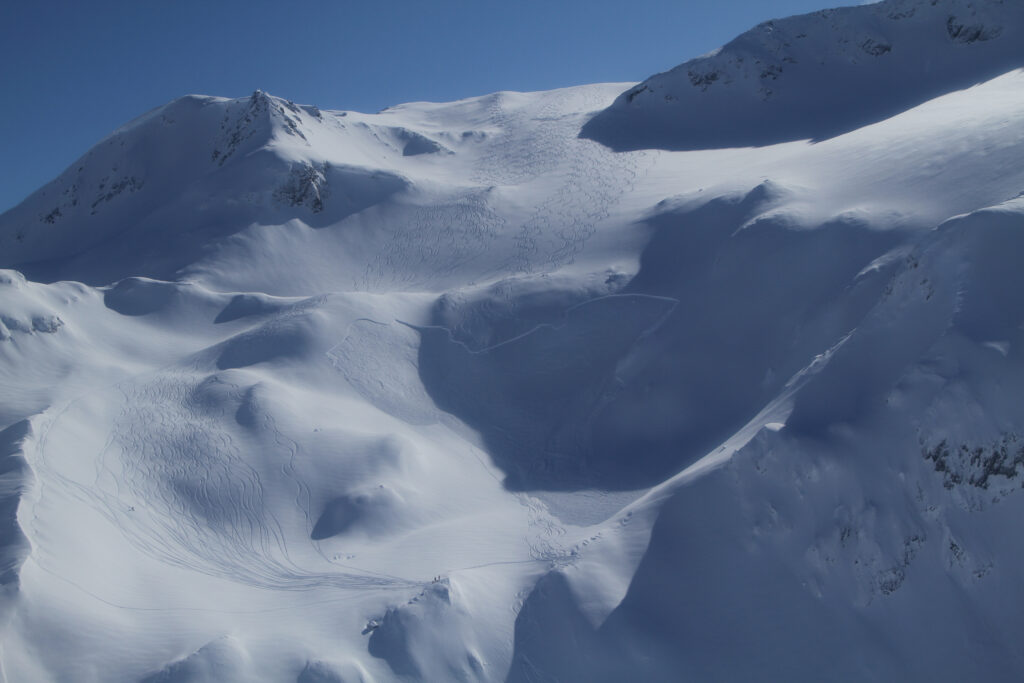
On the theory level, one-at-a-time is a great rule for terrain management. It’s only a perfect rule in perfect terrain: such as a run with a clean ridge, legit escape routes, a clean runout that isn’t too flat, and that doesn’t have any connected overhead exposure.
For terrain not like that (most of it where I work), OAT works only as well as your ability to predict where the avalanche will run, if triggered. If you take an alpha angle approach—measuring the maximum possible runout—your prediction will be safe, but it will it take impossibly long to get anywhere with a group, and you will find yourself so far away from your partners that you are practically alone, safe from the very unlikely mega avalanche, but too slow to respond to the more likely small avalanche.
If, on the other hand, you try to predict accurately what avalanche size and character threaten you and to predict where those avalanches might run, you’re in the uncertainty zone. There, mistakes will be made but you may or may not know you’ve made them. If we’re out in backcountry avalanche terrain to ski, chances are we’re going to be accepting the inherent risks of the latter approach.
A lot of terrain simply doesn’t allow for perfect one-at-a-time travel. In the that world, OAT is still sacred but needs to be supported by both tactics and luck.
One practical tip for those situations: pay attention to the first person and the last person. The first person on the slope is going to have some thoughts about the snowpack. They’re going to have a fresh perspective about where to regroup. They might find that they can’t see well enough from where they stopped or that they don’t feel safe there. Make sure the first person has all this in their head and that they have a way to communicate changes of plan. If you’re skiing in unfamiliar terrain, you’re very likely to find the terrain and snow looking and feeling different from “down there,” and the first person to ski is the one who might need to adjust course as a result.
The last skier is usually the most exposed from a rescue-time standpoint and should ski a disciplined line. Try not to let CATHY (Cold, Afraid, Tired, Hungry or Young person) go last either, nor the person who is having issues with her binding or has to carry his dog. Think every time about how you would rescue that last person on slope and talk it out if you don’t know. The other practical suggestion involves how you think. Throughout your travel in avalanche terrain think about how well you’re achieving the goal of only exposing one person to an avalanche and keep an eye on it like you would watch the dashboard in your car.
Talk and think honestly about how well you are achieving one-at-a-time. Unless you or someone else is really blowing it (or you are in easy-to-manage terrain) try to avoid putting it in binary, pass-fail terms. Finally, consistently take a step back and think about how your dashboard would look if you were reasonably wrong about the avalanche problem, and use that test to see how much of a buffer you should give to your predictions. Sometimes your predictions need a big buffer, sometimes they don’t, but don’t expect to know. Good luck sorting all this gook out, and thanks for doing the work.
Henry Munter is the General Manager and a Lead Helicopter Ski Guide at Chugach Powder Guides in Girdwood, Alaska.
Steve Conger
From Dale Gallagher’s original teaching: HOT CROSSING
High on the slope
One at a time
Take precautions
Mark Saurer
First off, thanks for directing us to this article, I had not read it. Since our late October winter storm has killed the MTB riding (for now anyway), it was good to review and think over our winter travel habits. In reading through the comments, it seems that many of us have similar habits (which is a good thing). As for my bulleted thoughts…
On the up track…
- when out as a work crew, we do tend to travel together, especially on the well established “trade route” skin tracks here in upper LCC. I’ve even overheard the comment, “here comes UDOT with their orange coats all in a row.” (honestly, I think it was Hardesty who said that 🙂 ). In reality, we rarely are out in groups larger than 2 or 3.
- if, however, we don’t like where the track is going, we won’t hesitate to set our own across better (safer) terrain.
- when conditions or terrain warrant, we’ll hold up while the first in line crosses something questionable, then proceed OAT across that zone.
- obviously it’s common on a busy day here that several parties can be skiing above us towards a similar goal. If terrain they are crossing above seems questionable, then again we’ll hold up in a “safe” spot and even consider a different route.
- when I’m traveling solo and breaking trail, for work or recreation, I just avoid putting my up track in or exposed to avalanche terrain.
On the way back down…
- on a shorter run with good visibility, we certainly ski OAT to a predetermined safe gathering spot.
- if visibility is poor, we’ll discuss route down before separating then make a radio call to whomever is waiting to go next so as not to ski on top of each other. Good chance to give beta about the snow conditions and best/most fun lines 🙂
- if the skier has an issue mid-track, he/she will communicate via radio so the others aren’t wondering.
- on longer runs, we still travel OAT, but utilize “islands of safety” to leapfrog and keep the group a little closer together. These spots are discussed before we separate so we’re all clear as to where each skier will be. Again, radio communication is key to assuring the first skier has pulled up and it’s clear for the next to proceed.
- skiing solo, I take time to look around me above and below to be sure I’m not putting someone at risk or vice versa. I’ll alter my route accordingly or just sit and wait if needed.
Hope that helps. Really no golden nuggets, seems like I generally agree with the article and comments. I do a lot of solo skiing up here at work and like to seek out the quieter areas to just meadow skip or bop through the low-angle trees. I leave the big, cool, rad, popular lines to the masses.
Mark Saurer is currently a highway forecaster with UDOT in Little Cottonwood Canyon and part time patroller for Park City. He’s spent most of his professional life in the snow and avalanche world ever since he was hired on the Sun Valley Ski Patrol in 1987 as their youngest rookie ever.
Emily Johnston
A few thoughts in no particular order. (Not meant to tear Lou up at all, just thoughts on his thoughts):
- “In my view, the gold standard in avy safety is exposing one person at a time to hazard, “OAT” for short.” —LD
Although OAT is the gold standard, there may also be value in ‘modified OAT’ (TAT, 3AT, but probably not FAT). Blase Reardon’s astute comment (from the online version): “OAT preserves resources if your group does have an accident. It’s much easier for two people to find one buried person than one person to find two.” With larger groups and lower hazard situations, in seeking the balance between efficient movement and hazard mitigation, could we risk saying: it’s easier for six people to find two? - I’m personally averse to backcountry groups larger than 4-5, but both professionally and recreationally, larger conglomerations do happen so the logistics are worth pondering.
“Safe zones and islands need to be 100% reliable.” —LD
Sounds great! We all know there is no “100% reliable” that we, as humans, can identify and confirm. Even general relativity breaks down at the quantum level.
“Hazard,” “island of safety,” “safe zone” are subjective and require good judgment to accurately identify. “Good judgment” is itself subjective. Are we good, or just lucky? And how do we know? Does good judgment come from training? experience? awareness? intelligence? divine intervention? alien abduction?…the answer is yes. - There is no checklist, or set of decision rules, that can replace good judgment, although they can be helpful tools. Checklists are used extensively in aviation and medicine, and have had a positive impact on safety. In medicine, there are many sets of decision rules, but research has shown that the decision-making of an experienced provider is still better than strictly following a set of rules. Decision rules are helpful guidelines for those who are still damp behind the ears, as well as crusty veterans, however, experienced intuition still trumps data. Also true in avy terrain. But what does “experienced” mean? See “good judgment” above (like a watermelon seed, or a dirtbag boyfriend…hard to pin down!).
“Finding a safe zone is an art, not a science.” —Lynne Wolfe
Exactly!!! - “But I watched a guide ski down with three clients at once!”
A fine example of ‘normalization of deviance’ (amongst other things) which is its own, highly relevant, can of worms and perhaps deserves to be addressed separately. - During avalanche control work, OAT with closed loop communication is the norm. Why is this not the case in the backcountry? Self observation tells me that I operate differently in these two environments for a number of reasons; some conscious, some subconscious, none entirely logical.
Clearly the goals are different. Also, control work usually happens when the avy danger is more significant; backcountry travel usually happens when the avy danger is less significant. Obviously, there’s overlap in this Venn diagram.
One simple thought is that better communication capability and structure would be beneficial in recreational backcountry groups, but is expensive, logistically complex, and perhaps intrusive. - While it’s important to dynamically assess the risk in your environment, and actively mitigate hazard, it’s crucial to not get so focused on hazard assessment and mitigation techniques that you forget to ask yourself: If I think it’s really this dangerous, what am I doing here in the first place? There is no shame in putting your tail between your legs and beating a hasty low hazard retreat.
Emily Johnston has been a pro patroller, mountain guide and backcountry skier for about 30 years, and occasionally takes time out from itinerant recreational work to practice emergency medicine.
Peter Thurston
Great article from Lou. I have experienced most of the variations that Lou writes about. Here are some thoughts:
Of course the usuals like stability assessment, outcome assessment if things go wrong, safe spots, etc., all come into play but given a scenario with a nice long pitch deemed stable enough to ski (but still suspect) with good safe spots I have seen the following:
Real OAT—each person skis the entire run and parks at a safe spot before the next person proceeds or the group leapfrogs OAT between safe spots. This approach only seems to work with small groups (2–3) of people who ski (together) a lot, are patient and willing to take the extra time, are happy to alternate sharing the freshies and don’t feel pressured to get in as much skiing as possible during the day. From a safety perspective this is clearly the best option and I personally love the leapfrogging approach. Most of my ski partners who are happy with this approach have witnessed substantial avalanches or seen slopes that avalanched on the second or third or fourth run. Having seen the beast in action they know what can happen.
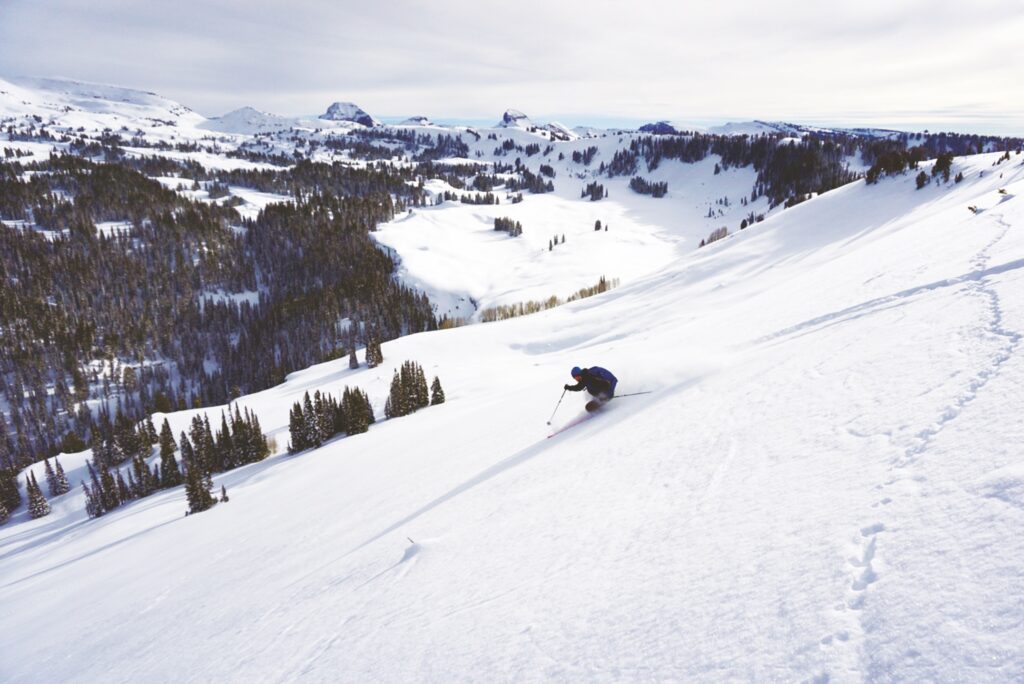
We agreed “but” OAT—in this case the group agrees to go OAT but when the first skier is most of the way down and an avalanche has not happened one person will get itchy and just jump in. If the slope doesn’t slide with skier #2 the positive reinforcement feeds the rest of the group and quite often OAT is then abandoned. This is super frustrating, especially after the group agreed to go OAT.
Larger groups (3–6) of skiers seem to be at risk of this happening. Often these are folks who don’t have the opportunity to get out as much as they would like and are keen to maximize the ski day. However, I’ve seen lots of super experienced people jump in and go like this. Presumably they’ve made some sort of revised assessment in their heads while watching the first skier and decided that OAT was not really necessary. If I’m in a group and this starts to happen I tend to hang back and go last.
I can’t see you OAT—here we have the classic conundrum of skiing OAT but the skier vanishes, presumably into a safe spot, and the folks at the top don’t know what is happening down there. This seems to happen a lot in unfamiliar terrain. Some folks are now carrying radios that can alleviate the problem a bit, but the root of the problem is communication (visual and audible) and finding a safe spot to stop where the folks at the top can still see you.
It can be really hard to stop where the rest of the crew can see you when you are skier #1, the snow is stable, and you are in full powder pig mode. The tough part about this scenario is what to do next. Skier #2 essentially now has the same risk as skier #1 with the added risk that #2 will trigger a slide that entrains skier #1. There’s no easy way to mitigate this variation on OAT. Try really hard to make a safe spot stopping plan and stick with it. A predetermined “I’ll holler twice when it’s safe for you to come down” can work if everyone stays quiet and waits for the holler.
OAT not required—There are conditions where OAT is not strictly necessary. In this case the first run might be done OAT but subsequent runs on the same slope or new runs on similar aspects are skied as a group with adequate spacing between skiers. This is lots of fun, you’re zooming down with your buddies, all hooting and smiling and contemplating more laps. I think this is everyone’s favorite, certainly lots of fun for me, but it takes a tight (small) group with good assessment skills to “make the call.” Good knowledge of the terrain also helps in making the call to ski as a group.
Strong skier last—In a group with skiers of mixed abilities I’m a big believer in this. More than once I’ve played sweep and had to help someone else get back together after a crash mid slope. I don’t mind this at all and it seems to help the less strong skiers enjoy the experience if they know there is someone watching from above.
The photo stop—I’m 100% guilty of this one because I love to take photos. I am well aware that some of the “safe” spots I’ve chosen over the years were not really that safe so I do try to be more situationally aware. No easy answer to this one. Some days I have the camera but conditions are sketchy so the camera never comes out. Other days the stability is good and I have the opportunity. What I don’t want is to get buried and die with my legacy being the last photo in the camera showing a wall of snow headed at me.
Safe spot in runout—Very common problem with folks who have never seen firsthand how far a slide can go. I’ve seen people waiting at the “safe spot” in the middle of the runout at the bottom of the run wondering why nobody else in the group has come down yet. If you’re going to ski the entire shot OAT make sure that everyone agrees on where the safe spot is at the bottom before skier #1 heads down.
Finally, there is the no go option. There are times (not many fortunately) when you skin up, check it out, see all the signs of poor stability, don’t like the snowpack at all and have to decide if you’re going to ski something other than the skin track you just came up. Typically evolves (devolves?) into deliberations about no go versus “maybe if we’re really careful and go OAT we can do it.” This turns into a mind trap that pits you and your abilities against your best instincts and training. Being able to say no is really hard. A discussion of “just say no” could fill an entire article.
Peter is an avid skier and outdoor enthusiast based in Driggs. He recently retired after 35 years as a geologist and is now planning more ski adventures.
Josh Kling
Never a never…First off, there is never a never and never an always, and always will always get you in trouble. Those are pretty solid words I live by and preach on all styles of programs. I have trouble when folks say “you should always do XXXXX,” or “Never do YYY.” That goes for OAT, air bags, goggles, whatever example you want to use.
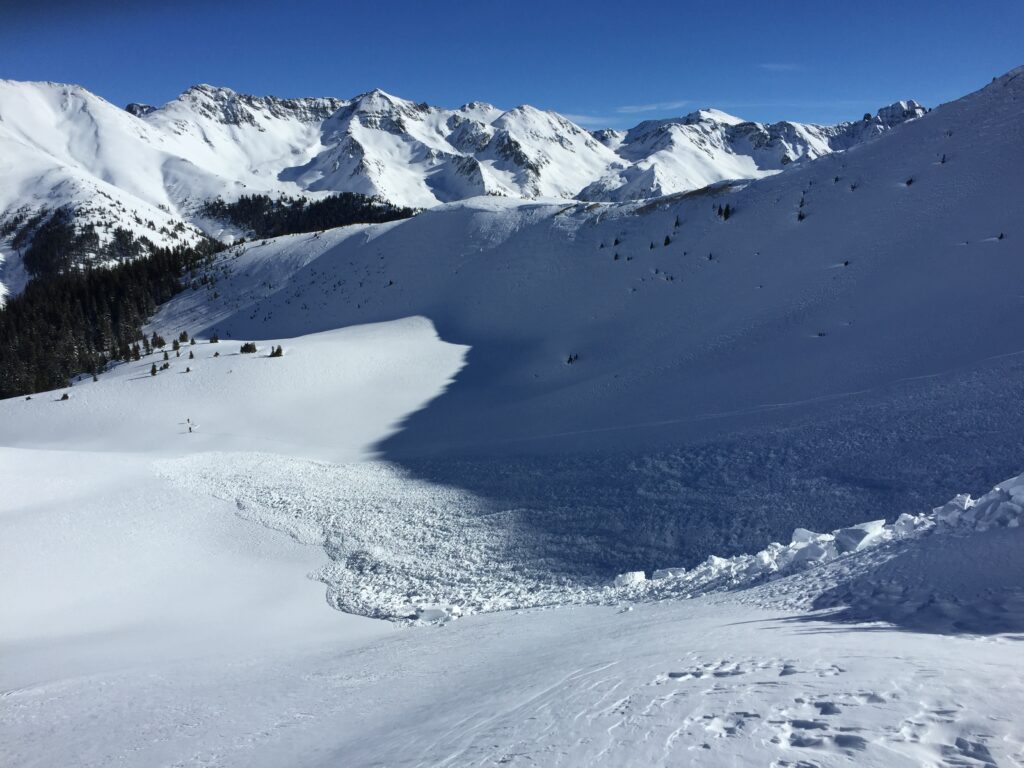
Have a normal:
- I like to “Have a normal and then argue against it.” Example is I typically like to ski with an air bag pack, skiing the majority of my time in the backcountry wearing one (Probably 90%+ of the time with one.) However, there are instances when I do not. Example might be skiing couloirs in May or June around Silverton when I am more concerned about rock fall than avalanches. OR a long multi-day ski tour where we are really avoiding avalanche terrain altogether.
- Regarding OAT, I typically do like to ski one at a time. This goes for a guiding context or when touring recreationally with buddies. The cost/ benefit seems to be well worth it. It costs minimal time and the benefit seems to be worth it, especially if I planned the rest of the tour well. That said, in some instances it’s not needed. What if we are skiing low angle hippy pow (20 degrees) and not in a runout? Skiing “Waren Miller” style as a group can be super fun!
It’s just a tool: OAT is just one tool in an entire tool box of risk mitigation. However, it may be one of the most useful tools out there.
Actually do it! If you are going to ski one at a time, then really do it.
Make sure they are really safe zones:
- Make sure safe zones are really safe zones. I was working with a new guide a number of years ago around Red Mountain Pass. She walked me though her thought process of how she was going to guide us down a particular run. Then she pointed out her safe zones and exits. This new guide at least had a safe zone on her radar. However, like many, she was not really choosing appropriate / actual safe zones. We discussed how if the slope avalanched, her “safe zone” would still be taken out.
- She skied the runs and set the skier’s right boundary. She had a great run. The second skier went and spooned her tracks. On his fifth turn the slope avalanched. The second skier was not caught, carried, and there was no loss of gear. The slide ran to his left. The first skier/ “guide” was in the new safe zone that she and I had agreed upon. She was untouched in her amended safe zone. Had she been in the original safe zone she would have been buried. It’s not often that you get such clear and timely feedback.
- A mentor once told me that safe zones should “give you the warm and fuzzies.” Folks seem too often underestimate how large avalanches are going to run. This seems to be true even when we have a reasonable and accurate understanding of the snowpack and avalanche problems. If you look at the safe zone and say “well, as long as this doesn’t avalanche THAT big, we SHOULD be ok…” Then it probably is not a safe zone.
Josh Kling is Coordinator of Permitting and Programming for the Outdoor Pursuits program at Fort Lewis College, where he gets to work and play in the snow with students around the globe. He is the founder of Kling Mountain Guides (now part of Aspen Expeditions Worldwide), and author of Backcountry Skiing Silverton. He is an AMGA certified alpine & rock guide and assistant ski guide and has been working and playing in the San Juan Mountains around Silverton, CO for close to 20 years.

